Correction of hair extensions: timing and technology
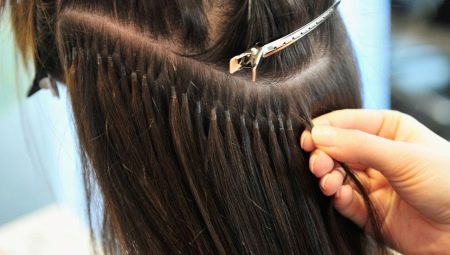
Hair extensions help girls, and sometimes men, to achieve the length and density of hair that they like. However, in order for it to always look fresh and beautiful, as well as to preserve the quality of natural hair, it is periodically necessary to carry out a correction procedure and change the extended strands.
How often should you take it?
The correction procedure consists in removing the “donor” strands in the hair, and then reattaching them to natural hair. This is done because in 2-3 months, during which there were extended curls on your head, your hair grows back, and the distance between the scalp and the "donor" strands increases.
The capsules become entangled in the hair, making the hair look messy. To avoid such a nuisance, a corrective procedure is carried out.
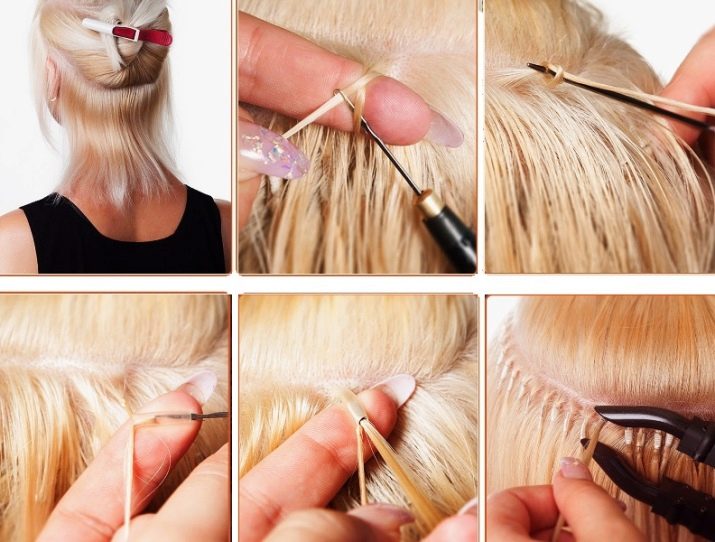
How often should it be done? Of course, you can focus on personal characteristics: for example, everyone's hair grows at a different rate, if one girl may need a correction in a month and a half, another walks calmly with extended curls and 3. But there are other nuances worth paying attention to, namely:
- building technology;
- features of the care procedures.
If you have hair extensions using one of the capsule methods, it is recommended to do a correction every 3 months. When using tape build-up - once every 1.5 months. But again - these are all recommendations, not rules.
Look at the state of hair after a month, two, three and build your own schedule for the correction procedure.
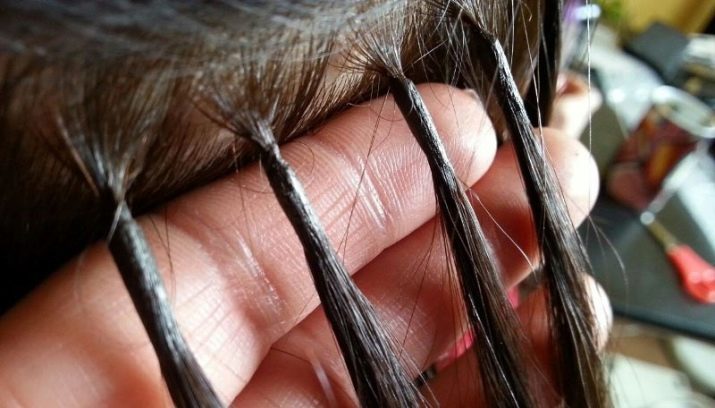
How does the correction take place?
The nuances of performing correction work entirely depend on the method of building up. Therefore, we will consider each of them separately.
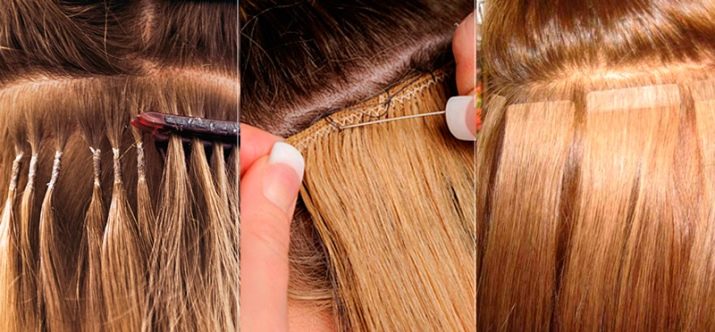
Italian method
To begin with, each microcapsule is treated with a softener - remover to destroy it. Next, the stylist takes the forceps, squeezes the microcapsule and splits it. The "donor" strands are detached from the hair, and keratin particles are removed from them. After that, the preparation of hair for extension begins. The natural curls are combed, cleaned of keratin particles, washed thoroughly with a degreaser shampoo.
If necessary or desired by the client, paint or haircut is performed.
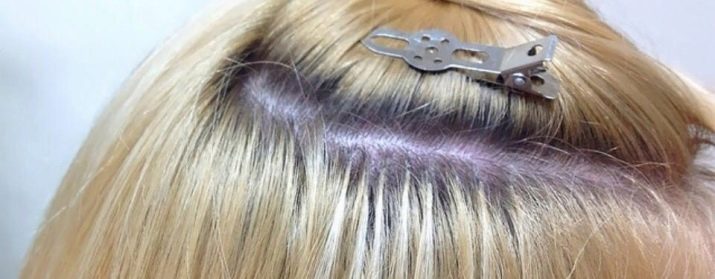
By the way, at this stage, a specialist may advise for a while to refrain from extensions to restore the quality of natural hair. If the correction procedure is nevertheless carried out, keratin “droplets” are applied to the “donor” strands and fixed to the hair by heating and pressing with special forceps. In terms of time, the removal of microcapsules can take about an hour, and the repeated extension procedure can take 2 hours or more.
English method
All corrective steps are almost identical to the previous method. The only difference is that not keratin, but resin is applied to the base of the "donor" strands.
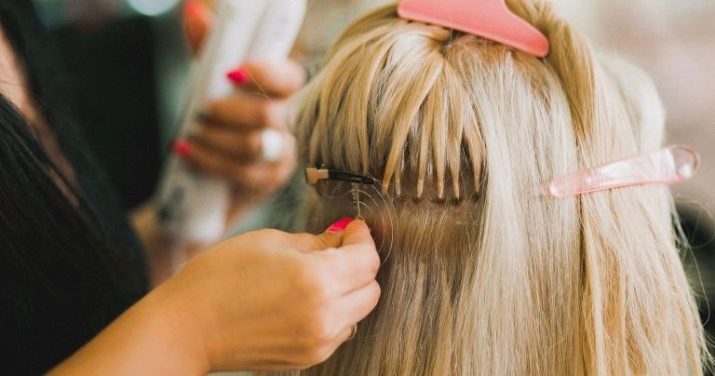
Spanish method
This is a hair extension without heat exposure: the strands are attached to the hair with a special glue. The correction is done as follows: the joints of all "donor" curls with natural hair are treated with a solvent remover. When the glue dissolves, its remnants are combed out of the hair, washed thoroughly, dried, and the strands are glued again. This procedure lasts about 60 minutes.

Tape technique
If you extended your hair with ribbons, then the procedure will be as follows: with a spray containing alcohol, a specialist sprays the ribbons and carefully removes them; removes the remnants of the old tape from all the "donor" strands and glues the new one. The hair is washed and dried, after which curls are applied with new adhesive tapes. As a result, they are removed for about 30 minutes, they are built up again in an hour and a half.

African technique (weft)
Hair extension using this technology involves weaving a braid-"basket" from natural curls and sewing tresses to it in a circle. The correction procedure consists in detaching the old material from the head, untwisting the braids, washing and drying the hair. Then a new "basket" is woven, to which the master sews new wefts. This whole process lasts about 2 hours.
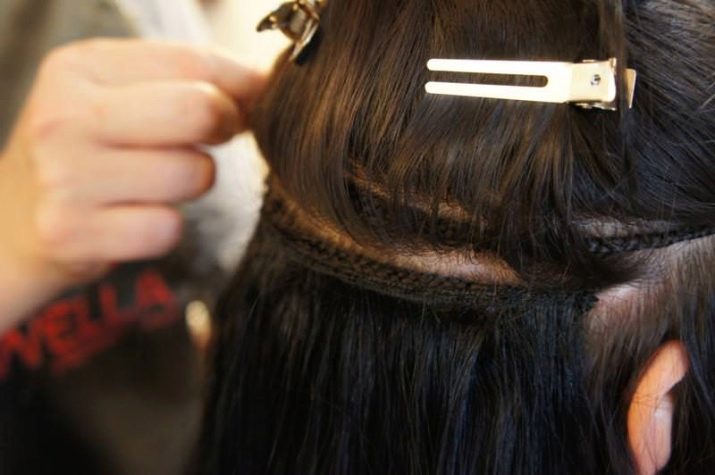
Brazilian technique
It is similar to the African one, but it consists in weaving the strands, and not sewing them on. When carrying out corrective procedures, the curls are simply intertwined closer to the hair roots. In time, it takes 2-2.5 hours.
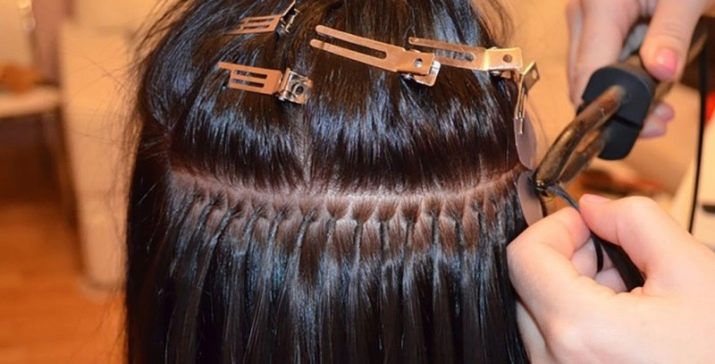
Japanese (clip) technique
Correction consists in the fact that the specialist with the help of forceps pushes the “clip” ring and moves the “donor” strands to the roots. The whole process usually takes about 3 hours.
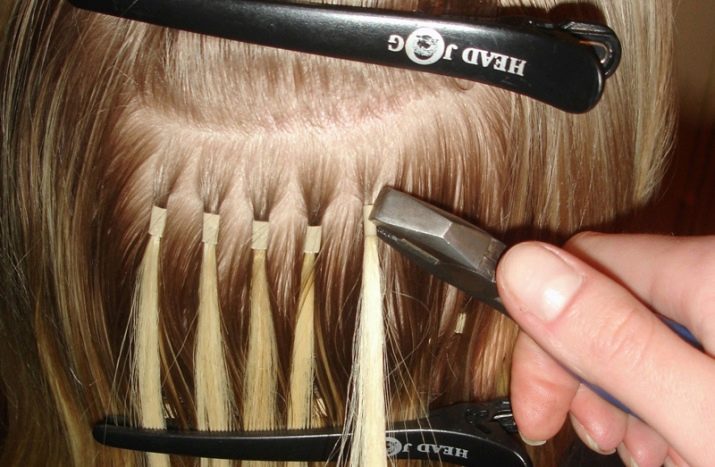
Professional advice
In order to prolong the life of your hair extensions, do not heed the advice of professional hairdressers and stylists.
- Never go to bed with dry hair. This contributes to the appearance of tangles and pulling out curls when combing.
By the way, only dry hair should be combed.

- When washing your hair, do not keep the products (shampoo, mask, conditioner) on your hair for more than a minute. Microcapsules under their influence soften and the "donor" strands can simply "slide".
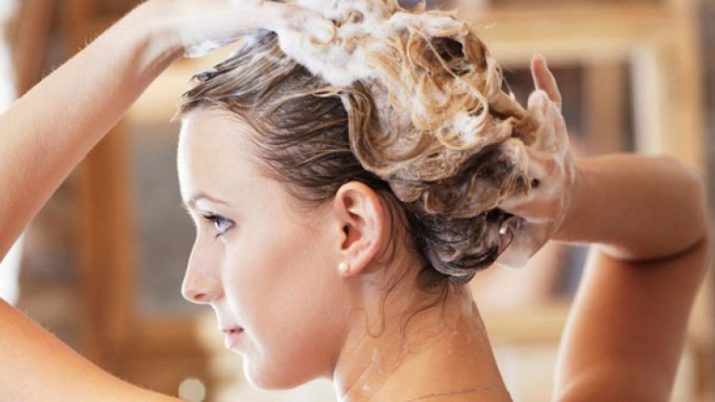
- When blotting your hair with a towel, move from top to bottom, do not tug on the curls, do not rub with force or twist.
- Brush gently 2-3 times a day, from the ends of the hair to the roots. This will avoid the appearance of knots and tangles in the future.
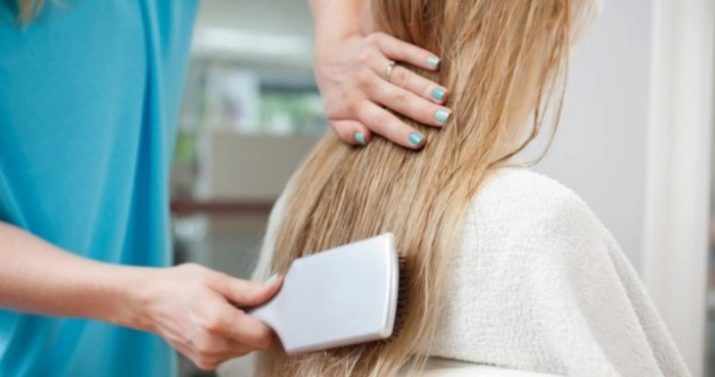
For the correction of hair extensions, see the next video.








